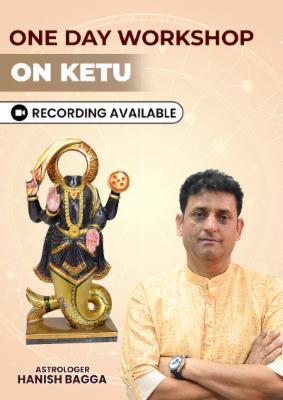Introduction to Thiruvairanikulam Mahadeva Temple
Nestled in the heart of Kerala’s cultural tapestry lies the Thiruvairanikulam Mahadeva Temple, a testament to the region’s rich spiritual heritage. This ancient shrine, located in Kodungallur, Thrissur district, stands as a beacon of devotion and architectural brilliance. As we embark on a journey to explore this sacred site, we’ll uncover the layers of history, artistry, and divine energy that make the Thiruvairanikulam Mahadeva Temple a must-visit destination for both pilgrims and history enthusiasts alike.

Location and Access
The Thiruvairanikulam Mahadeva Temple is situated in:
Thiruvairanikulam,
Kodungallur,
Thrissur District,
Kerala, India
Accessibility is relatively easy, with well-connected roads leading to Kodungallur. The nearest major city is Kochi, approximately 40 kilometers away. Visitors can reach the temple by:
- Road: Regular buses and taxis are available from Thrissur and Cochin
- Rail: The closest railway station is Irinjalakuda, about 15 kilometers from the temple
- Air: Cochin International Airport is the nearest airport, roughly 35 kilometers away
The Presiding Deity
At the heart of the Thiruvairanikulam Mahadeva Temple resides Lord Shiva, worshipped here in his magnificent form as Mahadeva. The main sanctum houses a powerful Shiva Lingam, believed to be swayambhu (self-manifested). This form of Shiva is revered for its ability to bestow blessings and remove obstacles from devotees’ lives.
Alongside Lord Shiva, the temple complex also houses shrines dedicated to:
- Goddess Parvati
- Lord Ganesha
- Lord Subrahmanya
Each deity plays a significant role in the temple’s spiritual ecosystem, drawing devotees with specific prayers and offerings.
Historical Significance
The Thiruvairanikulam Mahadeva Temple boasts a history that stretches back over a millennium. While the exact date of its construction remains shrouded in mystery, historical records and local legends suggest that the temple has been an active center of worship since at least the 9th century CE.
Key historical points:
- The temple is mentioned in ancient Tamil works, indicating its prominence in the early medieval period
- It is believed to have been patronized by the Chera dynasty, who ruled over much of Kerala during its golden age
- The temple survived invasions and natural calamities, standing as a symbol of resilience and faith
Architectural Marvel
The Thiruvairanikulam Mahadeva Temple is a stunning example of Kerala’s unique temple architecture, blending elements of Dravidian style with local influences. The temple’s structure is characterized by:
- A two-tiered circular sanctum (srikovil) housing the main deity
- Intricate wood carvings adorning the roof and pillars
- A spacious Nalambalam (inner courtyard) surrounding the sanctum
- Beautiful mural paintings depicting scenes from Hindu mythology
- A grand Dwajasthambam (flagstaff) at the temple’s entrance
The temple’s architecture not only serves its spiritual purpose but also stands as a testament to the craftsmanship of ancient Kerala artisans.
Festivals and Celebrations
The Thiruvairanikulam Mahadeva Temple comes alive with vibrant festivals throughout the year. Some of the major celebrations include:
- Shivaratri: A night-long festival dedicated to Lord Shiva, usually falling in February or March
- Thiruvairanikulam Festival: The annual temple festival celebrated for ten days in the Malayalam month of Meenam (March-April)
- Navarathri: Nine nights of worship dedicated to the divine feminine, celebrated with music and dance performances
- Vishu: The Kerala New Year, marked by special pujas and offerings
These festivals not only attract devotees from far and wide but also showcase the rich cultural traditions of Kerala.
Visiting Hours and Best Time to Visit
The temple observes the following timings:
- Morning: 5:00 AM to 12:00 PM
- Evening: 5:00 PM to 8:00 PM
Aarti Timings:
- Morning Aarti: 6:00 AM
- Evening Aarti: 7:00 PM
Best Time to Visit:
While the temple is open year-round, the best time to visit is during the cooler months from October to February. This period offers pleasant weather for exploring the temple and its surroundings. Additionally, visiting during one of the major festivals can provide a unique and immersive cultural experience.
Unique Rituals and Practices
The Thiruvairanikulam Mahadeva Temple is known for several unique rituals and practices:
- Rudra Abhishekam: A special puja performed to Lord Shiva, believed to be particularly powerful at this temple
- Pushpanjali: Offering of flowers to the deity, accompanied by the chanting of mantras
- Pradakshina: Circumambulation of the sanctum, considered a form of meditation and devotion
- Naivedyam: Offering of food to the deity, which is later distributed as prasad to devotees
Conclusion of Thiruvairanikulam Mahadeva Temple
The Thiruvairanikulam Mahadeva Temple in Kodungallur stands as a living testament to Kerala’s rich spiritual and cultural heritage. From its ancient origins to its continuing relevance in modern times, the temple offers visitors a unique blend of history, architecture, and divine presence. Whether you’re a devoted pilgrim or a curious traveler, a visit to this sacred site promises an enriching experience that will leave a lasting impression on your soul.





















